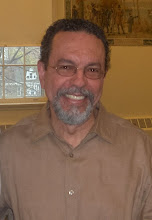Unlike other times I've been there, the audience was thin and this time no other musicians sat in. Twice before I've seen Hector Martignon show up and sit in on the piano. One other time a trombone player recently moved from California looking to make it in New York joined the band. That night was special because Barry Olson, the band's piano player, who also plays trombone, took it up and so the three trombones made up for one mean jam session, replete with nasty moñas à la Eddie Palmieri and the best days of La Perfecta.
I came in a little late, thinking that the show started at 8:30 pm, so I only caught the last three songs of the first set. I had heard them before and this made me think, "given that inevitably musicians must play their repertoire more than once, what do they live for? To play the same songs over and over ad infinitum? Boring."
Well, not really. I posed the question to Chris during the break. No song is played the same no matter how many times it is played. There's also improvisation, which I thought must be what makes the difference.
Thinking of my own experience as a teacher, I thought that ultimately what makes the difference is the audience, students, in my case, listeners for musicians. Every semester without fail I enter the classroom full of hope, expecting that something completely different, something exciting, will come of my interaction with a new set of students, even if I've taught the course a million times already. Course content does change everytime but only around the edges, pretty much like the rendition of the same song must change, subtly or radically, every time it is played before a new audience. That hope, the expectation that "this time the interaction will be different," must be what musicians (and teachers) live for. The changing audience is the thrill.



No comments:
Post a Comment